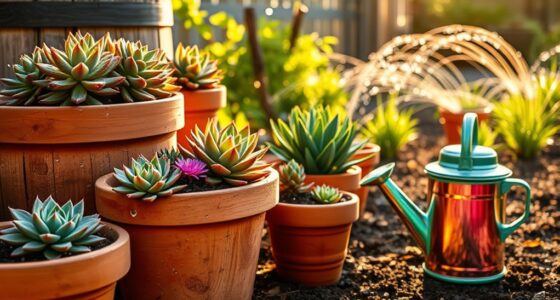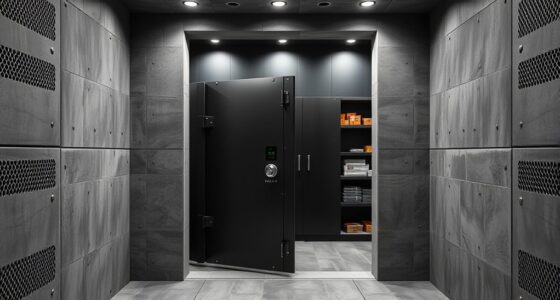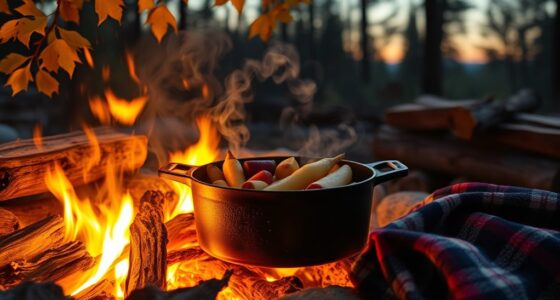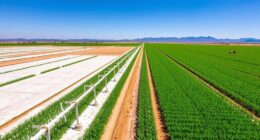When the power goes out, you can rely on portable stoves fueled by propane, butane, or kerosene for cooking, ensuring you prepare meals safely in well-ventilated areas. Using indoor combustion devices like fireplaces or wood stoves offers warmth and cooking options, but always follow safety precautions and keep vents clear. Having a stock of fuel, firewood, and safety gear is essential. Your safety and comfort depend on proper planning—learn more about staying warm and cooking safely during outages.
Key Takeaways
- Use portable stoves fueled by propane, butane, or gel in well-ventilated areas for safe cooking during outages.
- Rely on seasoned wood or indoor combustion devices like fireplaces with proper ventilation for heating and cooking.
- Keep emergency supplies, including fuel, safety gear, and lighting, readily accessible for quick response.
- Avoid operating outdoor equipment indoors to prevent dangerous fumes and carbon monoxide buildup.
- Layer clothing and use blankets along with alternative heating devices to conserve warmth and stay comfortable.
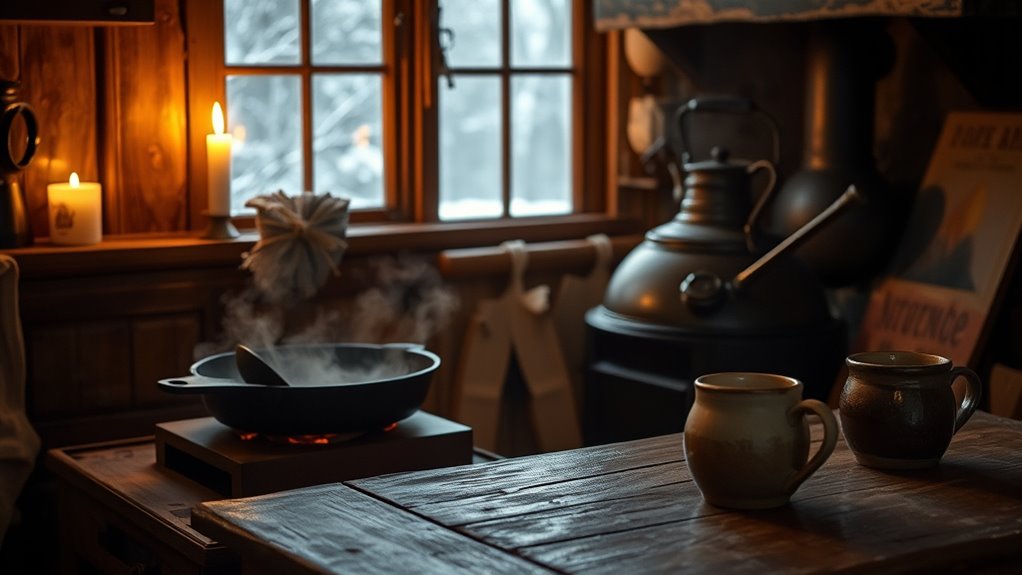
When the power goes out unexpectedly, it can disrupt your daily routine and leave you wondering how to cook and stay warm. During these moments, relying on alternative fuel sources becomes vital. Traditional electric appliances won’t work, so you need to think outside the box. Stocking up on portable stoves that operate on propane, butane, or kerosene can be lifesavers. These emergency heating devices can also serve as cooking options, allowing you to prepare meals safely indoors or outdoors. Always make certain they’re used in well-ventilated areas to prevent carbon monoxide buildup. Having a supply of fuel on hand is essential for these devices to be effective during prolonged outages.
Turning to alternative fuel sources, you might consider a small camping stove or a chafing dish fueled by canned fuel or gel. These options are lightweight, easy to store, and provide reliable heat for cooking or warming food. Remember, safety comes first—never use outdoor-only equipment indoors, and always follow manufacturer instructions. If you have a fireplace or wood stove, burning seasoned wood can keep your home warm and provide a heat source for cooking. Keep a stock of firewood nearby, and ensure your chimney is cleaned regularly to avoid dangerous creosote buildup. Additionally, understanding fire safety precautions is crucial when using indoor combustion devices to prevent accidents. Using a variety of heating options can help you adapt to different situations and preferences during outages.
Use portable camping stoves and seasoned wood safely to stay warm and cook during power outages.
Emergency heating devices like space heaters designed for use with alternative fuels can keep your living space warm without electricity. Gas-powered space heaters, for example, can be very effective, but they require proper ventilation to prevent dangerous fumes. Electric space heaters won’t work during a blackout, so focus on alternatives that run on propane or kerosene. It’s wise to have a few portable options ready, especially if you live in an area prone to power outages. Layering clothing and using blankets also help conserve heat, making your home feel warmer with less energy. Additionally, knowing how to safely operate indoor combustion devices is essential for preventing accidents and ensuring safety during extended outages. Incorporating proper ventilation practices can significantly reduce risks associated with indoor combustion.
Planning ahead means you’re less likely to panic when the lights go out. Gather your emergency supplies, including alternative fuel sources, emergency heating devices, and safety gear like carbon monoxide detectors. Keep flashlights, batteries, and a charged power bank handy for communication and light. Additionally, investing in a high-quality home heater with good safety features can make a significant difference during extended outages. Staying warm and cooking safely during a power outage requires preparation, caution, and the right equipment. With these tools and knowledge, you can handle unexpected outages comfortably and safely, ensuring your family remains safe and well-fed until power is restored.
Frequently Asked Questions
How Can I Safely Store Alternative Fuel Sources at Home?
When considering fuel storage, you want to prioritize safety measures to prevent accidents. Store alternative fuel sources in a cool, well-ventilated area away from heat or flames. Use approved containers designed for fuel storage, and keep them upright. Always label containers clearly, and avoid overfilling. Regularly check for leaks or damage, and keep a fire extinguisher nearby. Proper fuel storage guarantees safety and readiness during emergencies.
What Are Some DIY Methods to Create a Makeshift Heating System?
Your DIY heaters can be surprisingly effective if you use good insulation techniques to trap heat. Start by repurposing items like large tins or bricks wrapped in foil to radiate warmth. You might also build a simple solar heater with black-painted bottles or cans. Remember, a well-insulated space holds heat much longer, making your makeshift system more efficient. With some creativity, you’ll turn your home into a cozy haven even in the coldest times.
How Do I Prevent Food Spoilage Without Electricity?
To prevent food spoilage without electricity, you need effective food preservation and refrigeration alternatives. Store perishable items in a cool, shaded, and well-ventilated area, using insulation like blankets or coolers filled with ice or cold packs. You can also bury perishables underground where temperatures stay steady. Additionally, consider canning or drying foods in advance. These methods help keep your food safe and fresh longer during power outages.
Are There Portable Cooking Devices Suitable for Emergencies?
You can find portable stoves and camping cookware that are perfect for emergencies. These devices are lightweight, easy to use, and run on propane or butane, making them ideal when power’s out. With a portable stove, you can cook hot meals and boil water safely. Just make certain you have enough fuel and proper ventilation. Investing in quality camping cookware makes your emergency cooking quick and hassle-free.
What Safety Precautions Should I Take When Using Non-Electric Heating?
When using non-electric heating, you should prioritize fire safety by keeping the device away from flammable materials. Always guarantee proper ventilation to prevent dangerous buildup of carbon monoxide, especially with indoor use of fuel-burning heaters. Never leave the heater unattended, and install carbon monoxide detectors in your home. Regularly check for leaks or damage, and follow all manufacturer instructions to minimize risks during emergency heating situations.
Conclusion
When the power goes out, you become resourceful, turning your space into a cozy haven illuminated by flickering candles and the warm glow of a campfire. Imagine the gentle crackle of wood and the aroma of hot, comforting meals filling the air. With a little ingenuity, you can keep warm and fed, transforming a blackout into a quiet moment of connection and resilience. Embrace these simple pleasures, and you’ll find strength even in darkness.



